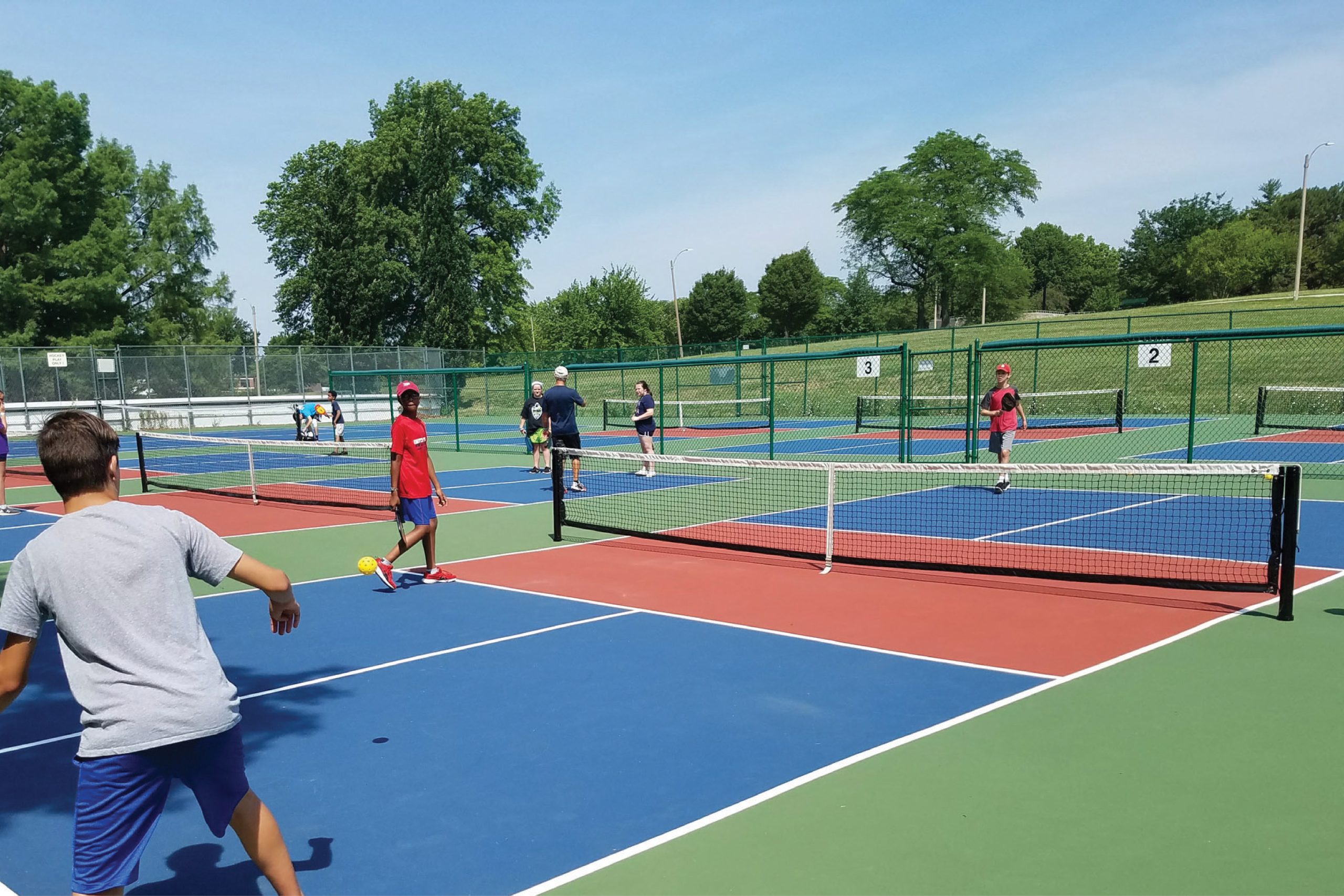When Michael Chapin started playing pickleball in 2014, the game had a limited presence in St. Louis. He recalls about 10 community centers offering indoor courts and less than 150 St. Louisans were on the email list for the U.S. Pickleball Association. Today, pickleball is big business in the Lou with more than 250 permanent courts in the metro—including the largest indoor facility in the country, the Missouri Pickleball Club—and around 5,000 locals playing regularly.
Chapin, who offers pickleball lessons and operates the stlouispickleball.com website, says the recent boom in popularity is partially thanks to the COVID-19 pandemic. “When we were in lockdown, people were looking for things to do,” he says. “The New York Times published a list of activities ranked in terms of safety, and right at the top was tennis. Pickleball is a more accessible option.” That accessibility skyrocketed with the introduction of portable net systems. In minutes, people could turn their basements, cul-de-sacs or driveways into courts.
While pickleball was the sport of the pandemic, Chapin believes its popularity would have grown regardless. “I’ve been teaching the game professionally for around eight years, and it’s very easy to learn, he notes. “There also aren’t barriers to entry. It doesn’t have to cost a lot to play, and you don’t need to be super athletic to win. There are very few sports that a grandparent and grandchild can play together and still be competitive. Pickleball is one of them.”
how to play
Pickleball is played on a small rectangular court divided by a low net. Free access to courts is available at several local parks, or many country and tennis clubs offer their members access to pickleball courts. Required equipment includes the pickleball and a paddle. Chapin notes that there are a variety of paddles available—whether it’s a low-cost option around $30 or a more serious investment of around $200.
The game can be played one-on-one or in doubles. Play ends when a side reaches 11 points, with a two-point advantage. To start, a player delivers an underhand serve to their opponent in the space diagonal from them. Both the serve and its return must bounce once. The sides volley back and forth until the ball hits the net, goes out of bounds or bounces twice or more. Only the serving team can score.
This is pickleball at its most simple. There are additional rules to consider, especially in more competitive play, but Chapin notes that local players are always willing to teach those who want to learn about the game. If you’re interested in learning more about advanced strategy, he suggests lessons. “It’s definitely possible to hit the court without experience,” he says. “However, as a racquet sport, there are different swing styles and strategies. It can be kind of like a chess match. It’s not always going to be the fastest or strongest player that wins the game. It’s about outthinking your opponent.”
where to play
It seems like you can’t swing a racquet in St. Louis without hitting a pickleball court. Here are just a few options for places to play.
- Arch Badminton Center
- Carondelet Park
- Dwight Davis Memorial Tennis Center
- Frontenac Racquet Club
- Missouri Pickleball Club
- St. Louis Jewish Community Center
- Tilles Park
- Tower Grove Park Vetta Racquet Sports
Photo courtesy of stlouispickleball.com








